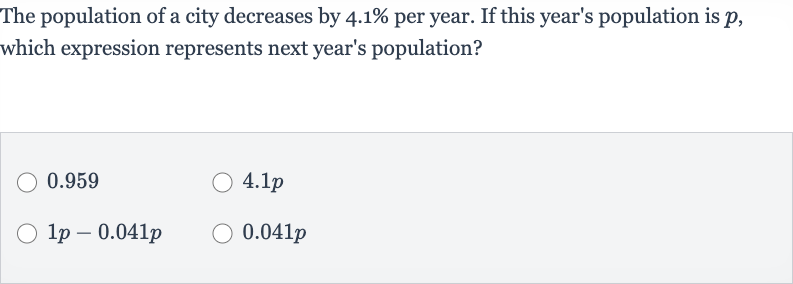Full solution
Q. The population of a city decreases by per year. If this year's population is , which expression represents next year's population?.
- Understand the problem: Understand the problem.We need to find the expression that represents the population of the city next year after a decrease of from this year's population, which is .
- Calculate remaining population: Calculate the percentage of the population that will remain after the decrease.If the population decreases by , then of the population will remain.
- Convert percentage to decimal: Convert the percentage to a decimal to use in calculations. as a decimal is .
- Write expression for next year's population: Write the expression for next year's population.Next year's population is this year's population multiplied by the decimal form of the remaining percentage .So, the expression is .
More problems from Percent of change: word problems
QuestionGet tutor help
QuestionGet tutor help

